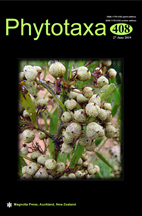Abstract
Datura stramonium (Solanaceae) is an annual weed found in most temperate and subtropical regions of the world. The taxonomic identity of this species is still under debate since Linnaeus first published the name. Early on, many varieties and forms were recognized. In Egypt, D. stramonium presents in two forms: the white-flowered ‘stramonium’ form and violet-flowered ‘tatula’ form. Some authors treated D. stramonium and D. tatula as two distinct species, while others included D. tatula within D. stramonium as either a variety or forma. The present study aimed to elucidate the taxonomic identity of both the white ‘stramonium’ and the violet ‘tatula’ forms based on morphological, palynological and cytogenetic studies extended to karyotyping. A taxonomic study of these forms was carried out using 75 morphological and pollen characters. Significant morphological differences were observed; the most important ones were flower and stem colour, in addition to flower and fruit dimensions. The anatomical examination of juvenile-fruit in acropetal transverse sections, revealed the gradual displacement of parietal placentation at the fruit base to axile at the fruit apex. Pollen of both forms showed no significant differences. Cytogenetic results revealed the presence of a diploid chromosome number (2n=2x=24) in both forms, with minor aneuploidy in the ‘tatula’ form. According to the karyotyping, notable differences were found between the two studied forms, including the centromeric index, total genomic length, and intrachromosomal asymmetry index. Morphological and cytogenetic data revealed that the two forms are different enough to be treated taxonomically as two distinct varieties, namely D. stramonium var. stramonium and D. stramonium var. tatula.

